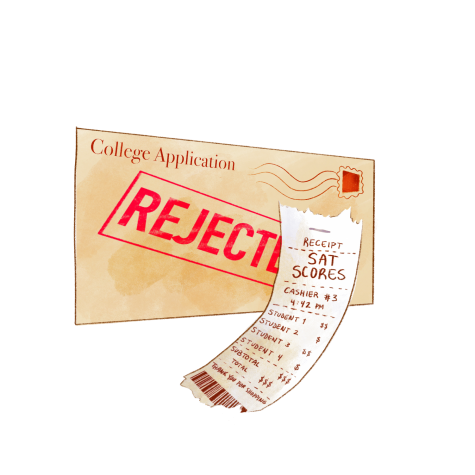Editorial: Exclusivity in the education system harms students
November 24, 2019

As a high school student, it’s exciting to know a college is seeking you out for admission when receiving a recruitment letter in the mail. This is especially true when that college’s acceptance rate makes you believe you could be one of a single-digit percentage of applicants who get in.
However, being met with rejection following the application process may cause confusion and disappointment to settle in.
This phenomena occurs more often than one would think, as in order to lower acceptance rates and boost exclusivity, top colleges are buying students’ SAT scores and sending recruiting materials to low-scoring students they plan to reject, according to a Tuesday, Nov. 5 Wall Street Journal article. But the public is no stranger to college scandals like these.
The College Board, the nonprofit that owns the SAT, buys into this game by allowing colleges across the country to purchase student scores and other information for 47 cents each. This practice benefits the College Board and participating colleges by lowering acceptance rates and creating a false exclusivity that only perpetuates the cycle.
The College Board receives this information when students respond to a survey portion of the SAT prior to taking the test in which they can decide whether or not to share their information with the College Board. And while the majority consent for their information to be shared, there is a percentage of students who refuse this practice. Still, high school students may be unaware of how their information may be used by the College Board.
Colleges can purchase student information from very specific demographic subsets, including race, gender, location and range of SAT scores, according to the WSJ article. Then, they encourage students from chosen demographics to apply, even though the colleges already may not plan to accept them.
Sending out recruiting materials to students a college plans to reject gives those students a false sense of hope, and colleges pocket the application fees of those who apply.
The value placed on getting into an “elite” college or university is evident through the admissions scandals that surfaced earlier this year. It seems that money can buy you into exclusivity, but many students cannot afford to choose a college solely based on this factor. Many students are forced by financial situations to look at the price tag first.
Many also find a correlation between exclusivity and priciness of a college and the quality of education one might receive there. Ivy League colleges, for example, are notorious for being both expensive and difficult to get into, but they are also considered the top colleges in terms of education.
Between 2001 and 2017, the cost of college at a four-year institution has gone from $18,573 to $26,593, after being adjusted for inflation, according to the National Center for Education Statistics.
Columbia’s Fall 2018 acceptance rate was 87%, according to the NCES. The school’s consistently high acceptance rates over the years could be a carryover from the college’s former open-enrollment philosophy. Another factor may be the decline in enrollment in recent years, or the fact that Columbia also does not require SAT or ACT scores with applications, though they are used in assessing merit-based scholarships.
The reality is most of us cannot afford to pay these elite colleges’ rising tuitions-—yet another face of exclusivity—and the percentage of people who get in does not equate to the quality of education you’ll receive there.







